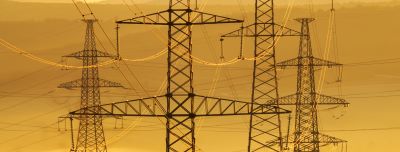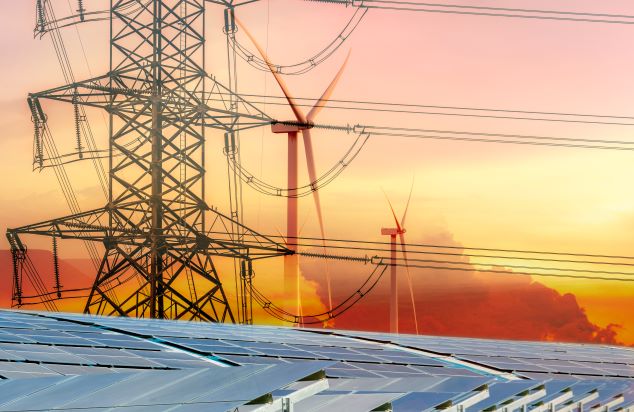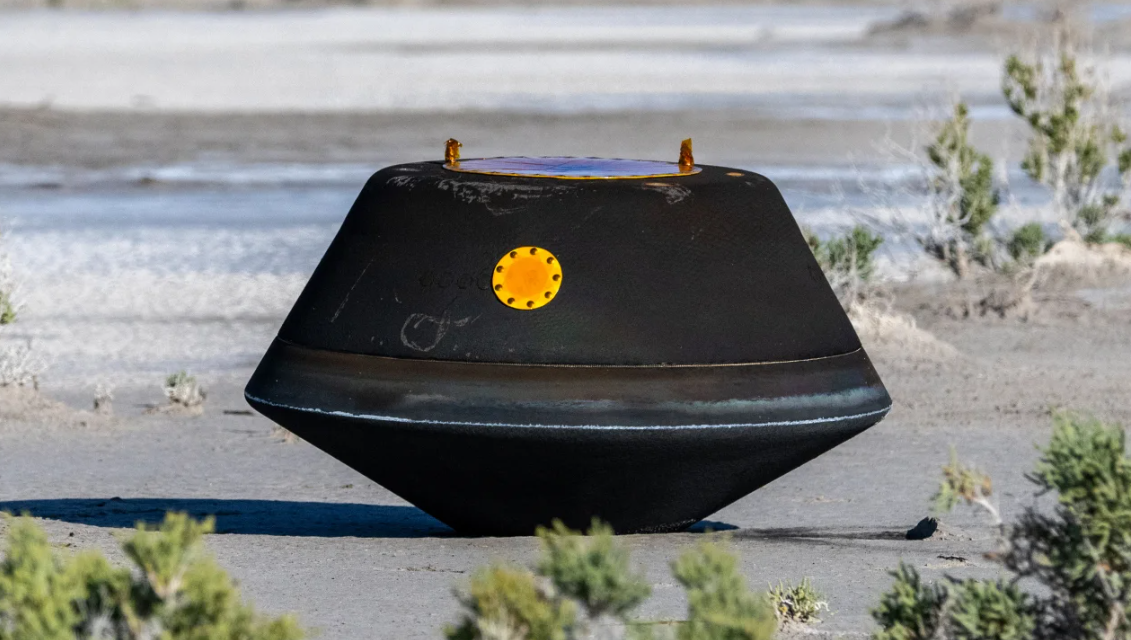Feds need to use their power to get interprovincial electricity transmission lines built
 The federal government needs to use its authority to get more interprovincial electricity transmission lines built or Canada won’t achieve its net-zero targets, says an expert on energy and environmental law.
The federal government needs to use its authority to get more interprovincial electricity transmission lines built or Canada won’t achieve its net-zero targets, says an expert on energy and environmental law.
 Ottawa has the constitutional jurisdiction to regulate interprovincial transmission lines but has made a policy decision not to do so, said Kristen van de Biezenbos (photo at left), a law professor at California Western School of Law.
Ottawa has the constitutional jurisdiction to regulate interprovincial transmission lines but has made a policy decision not to do so, said Kristen van de Biezenbos (photo at left), a law professor at California Western School of Law.
“They have the legal ability to do it but the federal government has chosen not to do that,” she told Research Money. “It’s going to be very difficult to reach net zero if the federal government doesn’t do something to prioritize interprovincial connections.”
Van de Biezenbos moved in August to the California law school after six years in the Faculty of Law and Haskayne School of Business at the University of Calgary.
Under the Canadian Net-Zero Emissions Accountability Act, Canada is committed to achieve net-zero greenhouse gas emissions by 2050. As part of this effort, the proposed federal Clean Electricity Standard will require net-zero emissions in the electricity sector by 2035.
In a published study, van de Biezenbos says the lack of interprovincial transmission is a national problem that’s discouraging private investment and making the country a laggard in renewable energy technologies – particularly wind and solar – and is frustrating further decarbonization.
Her study is in the Osgoode Hall Law Journal, published by the Osgoode Hall Law School at York University.
Standing in the way of Canada achieving net zero is an “electricity crisis [of] provincially balkanized electricity systems with a dearth of interprovincial transmission lines,” says the study.
The consequences are: the country divided into renewable have- and have-not provinces; a deterrent to private investment in renewable energy projects; and off-grid communities in northern Canada relying on expensive, unreliable and dangerous diesel fuel to generate electricity, according to the study.
To solve the problem, van de Biezenbos argues that Ottawa needs to assume at least some of its infrastructure transmission jurisdiction to ensure a just transition to safe, renewable power sources, and to promote investment in renewable energy projects across Canada.
The federal government does regulate interprovincial oil and natural gas pipelines. From a jurisdictional perspective, there isn’t a difference between those pipelines and interprovincial electricity transmission lines, she said in the interview.
Ottawa’s decision not to regulate such transmission lines “isn’t based on the belief that they don’t have the legal power do it,” she said. “It’s based on something else, which I assumed to be a desire to stay out of what traditionally is an area of provincial control.”
Interprovincial oil and gas pipelines are owned by private companies, unlike electricity systems which are owned in most provinces – expect for Alberta and Nova Scotia – through their provincial utilities. The federal government has been reluctant to step in whenever there’s a dispute between provinces over electricity systems, van de Biezenbos said.
“It’s one thing [for the federal government] to say ‘Back off’ to a private company. But it’s another thing when it’s province versus province,” she said.
Another factor is that most provinces with considerable hydropower – Manitoba, B.C. and Quebec in particular – have historically focused on connecting with transmission systems in the U.S., a big export market for their electricity.
“The federal government hasn’t really been pushed to regulate interprovincial connections because there aren’t that many of them,” van de Biezenbos said. “So there hasn’t really been a reason for the government to deviate from its policy of non-interference.”
Compelling reasons for Ottawa to step in
There are now good legal, policy and economic arguments for Ottawa to step in and use its power to regulate interprovincial transmission lines, she said.
Most of Canada’s electricity system is already decarbonized, because of the prevalence of large-scale hydroelectric power. However, trying to transition the three provinces that still rely on fossil fuel power – Alberta, Saskatchewan and Nova Scotia – won’t be easy without replacing the provinces’ baseload source of electricity generation, van de Biezenbos said.
The best solution would be to increase the number of transmission interconnections with neighbouring provinces that have lots of hydropower, she said. “We could start taking fossil fuel plants offline now if we could replace them with hydropower from neighbouring provinces.”
Van de Biezenbos noted that electricity system modelling work, done by the University of Victoria’s Institute for Integrated Energy Systems, shows the national electricity system could be made completely net zero by 2035 by prioritizing wind, solar, energy storage and interprovincial transmission.
The modelling results were published in a 2022 study by Clean Power Pathways, a multi-year collaboration between university researchers and the David Suzuki Foundation.
Michael Law, president and CEO of the Alberta Electric System Operator, said his independent organization welcomes more renewables onto the province’s electricity grid. There’s a lineup of projects that would provide more than 30,000 megawatts of power, he told a media briefing last week.
However, paths to decarbonizing Alberta’s electricity system using large amounts of wind and solar power don’t provide sufficiently reliable power for the province’s economy, Law said.
Interprovincial transmission connections help manage some of renewables’ intermittency in electricity supply and swings in power load, they don’t help provide the baseload power that Alberta requires, Law said. Increasing the number lines “can be part of the long-term solution, but they are not a panacea of our challenges, as some might have us believe,” he added.
Also, many jurisdictions across Canada, including B.C. which has hydropower, aren’t forecasting to have excess power generation over the coming decades that could be provided to neighbouring provinces, Law said.
Van de Biezenbos, however, said there’s an economic argument for building more interties. A 2019 report showed a $1.7-billion federal investment incentive for interprovincial transmission lines would attract an additional $6.6 billion in private investment to finance the transmission infrastructure.
The Canada Infrastructure Bank has indicated it would be willing to supply the public funding, she said, adding: “But it’s going to take more than just money.”
Ottawa has the power to bring the provinces together to start building interprovincial transmission lines and the federal government might be the only party that could greenlight these connections, she said. “It can be done. It just requires political will that currently doesn’t exist.”
Ontario, Alberta, Saskatchewan and Nova Scotia are working together on a plan to build small modular nuclear reactors (SMRs) in their respective provinces. Last month, the Alberta government through Emissions Reduction Alberta announced $7 million in funding to oil sands producer Cenovus Energy to conduct a preliminary, multi-year study on whether SMRs can be safely, technically and economically deployed in oil sands operations.
However, deploying SMRs is still several years away. There isn’t a utility-scale commercial SMR in operation yet, none of the proposed reactor designs have regulatory approval, and challenges such as novel types of nuclear waste streams and potential proliferation of nuclear weapons-grade materials have yet to be resolved.
“We could build interprovincial electricity transmission now, as opposed to waiting for and building SMRs,” van de Biezenbos said.
Addressing energy injustice and energy poverty
In addition to the legal, policy and economic case for more interprovincial transmission lines, Canada has a problem with “persistent energy injustice” in many Indigenous and rural communities, according to van de Biezenbos’s study.
About 280 communities in Canada rely on diesel-fuelled power to generate electricity, including many small, remote and widely scattered communities in Canada’s North. However, diesel prices aren’t stable, shipments can be delayed, and burning diesel emits dangerous compounds such as black carbon.
“Without a national market for electricity, remote and Indigenous communities are at the mercy of provincial politics and priorities when it comes to electricity,” according to her study.
The federal government now has no deep expertise on electricity systems because it doesn’t take any jurisdiction on interprovincial transmission lines, and relies on provincial processes even when permitting international lines, van de Biezenbos said.
“If they [Ottawa] took a more active role in transmission planning, I think that would also help give them the capacity to be more creative in coming up with solutions for the Northern territories.”
Building transmission lines in Canada’s North would be prohibitively expensive due to widely scattered communities, the difficult terrain and extreme weather, van de Biezenbos said. But she suggested that a potential solution might involve renewables and or/SMRs, with diesel reserved only as a backup in case of an infrastructure failure.
Whatever the North’s future power sources might be, the approach has to be flexible and decisions made in partnership with the people who live there, van de Biezenbos said.
Despite the need in Canada for more electricity, including more renewables, to achieve a clean energy transition and net zero emissions, the Alberta government in early August implemented a seven-month moratorium on approving new wind, solar and geothermal projects.
Van de Biezenbos said a problem in Alberta’s deregulated, competitive wholesale electricity market is that the province lacks a dedicated process – unlike provincially owned utilities such as BC Hydro and Quebec Hydro – to plan for how much electricity generation will be required in the long term.
In Alberta, private companies and other players can apply at any time to build new fossil fuel power plants and renewable facilities.
The Alberta’s government’s moratorium on renewables is affecting 118 proposed renewable energy projects worth $33 billion of investment, according to an analysis by the Pembina Institute, a Calgary-based clean energy think tank.
Van de Biezenbos said that if the UCP government was concerned about whether the many proposed wind and solar facilities will be needed in the future, then it should put in place a planning process for the province’s electricity system over the long term, “as opposed to a moratorium which is an anti-market thing to do and not consistent with the values that you say you have about promoting free markets.”
In the bigger picture, she added, if the federal government doesn’t step in and exercise its jurisdiction over interprovincial transmission lines, there’ll be no or little movement toward achieving net zero. “There’ll be just endless litigation, fighting, and attempts by the federal government to overcome it with new rules and new regulations which they get sued over by the governments in Alberta and Saskatchewan.”
R$
Events For Leaders in
Science, Tech, Innovation, and Policy
Discuss and learn from those in the know at our virtual and in-person events.
See Upcoming Events
You have 0 free articles remaining.
Don't miss out - start your free trial today.
Start your FREE trial Already a member? Log in
By using this website, you agree to our use of cookies. We use cookies to provide you with a great experience and to help our website run effectively in accordance with our Privacy Policy and Terms of Service.





